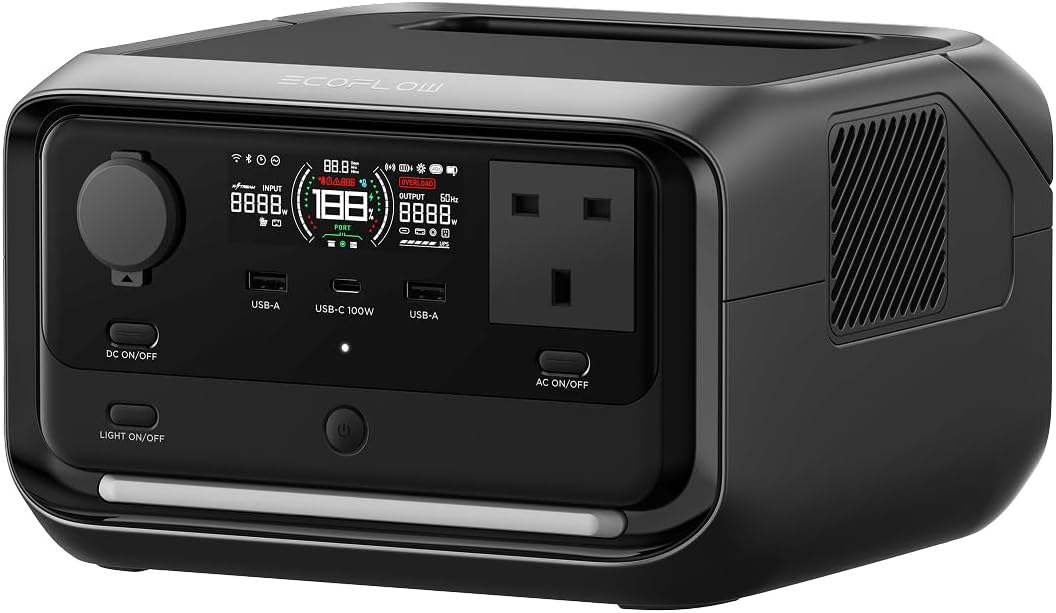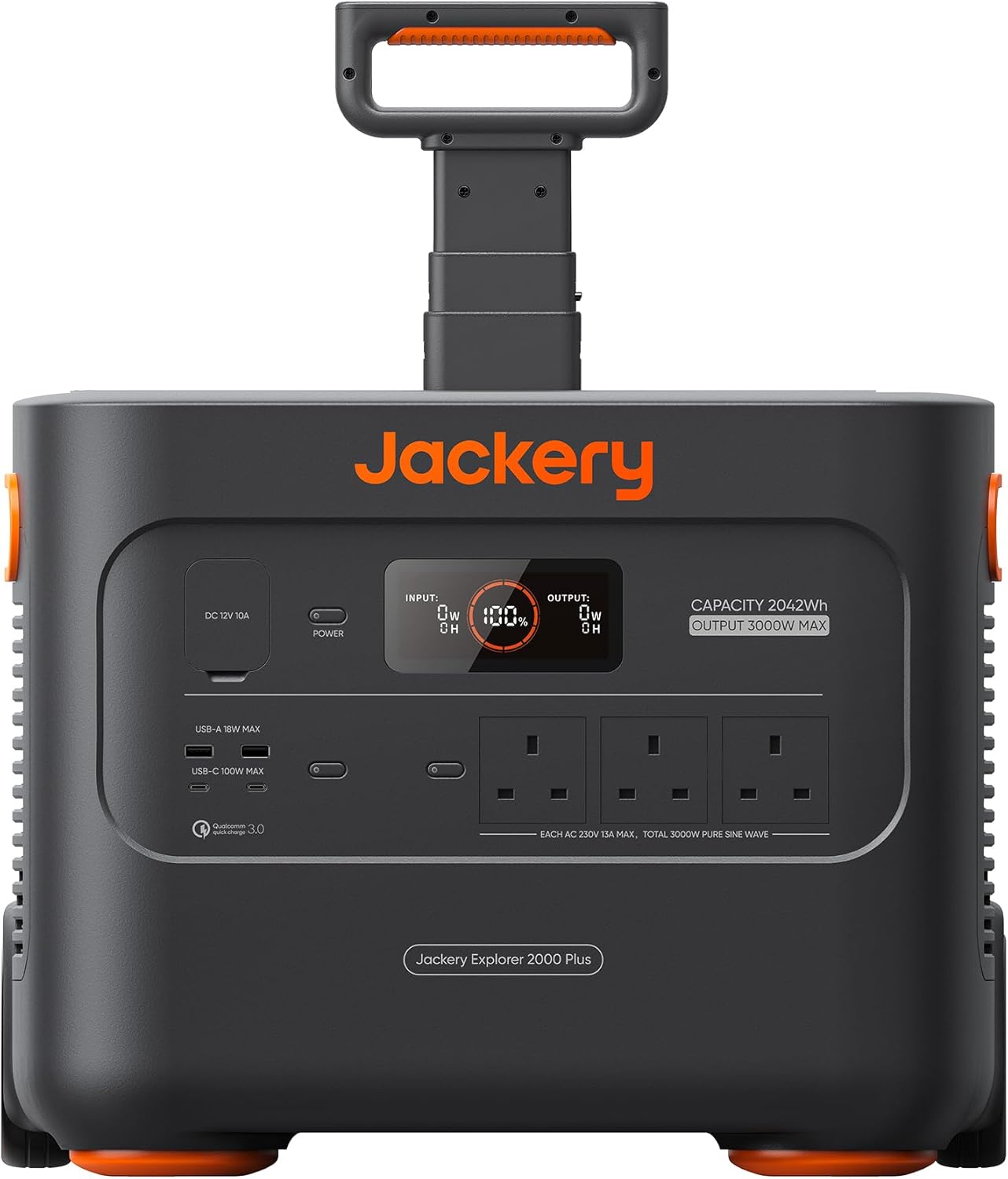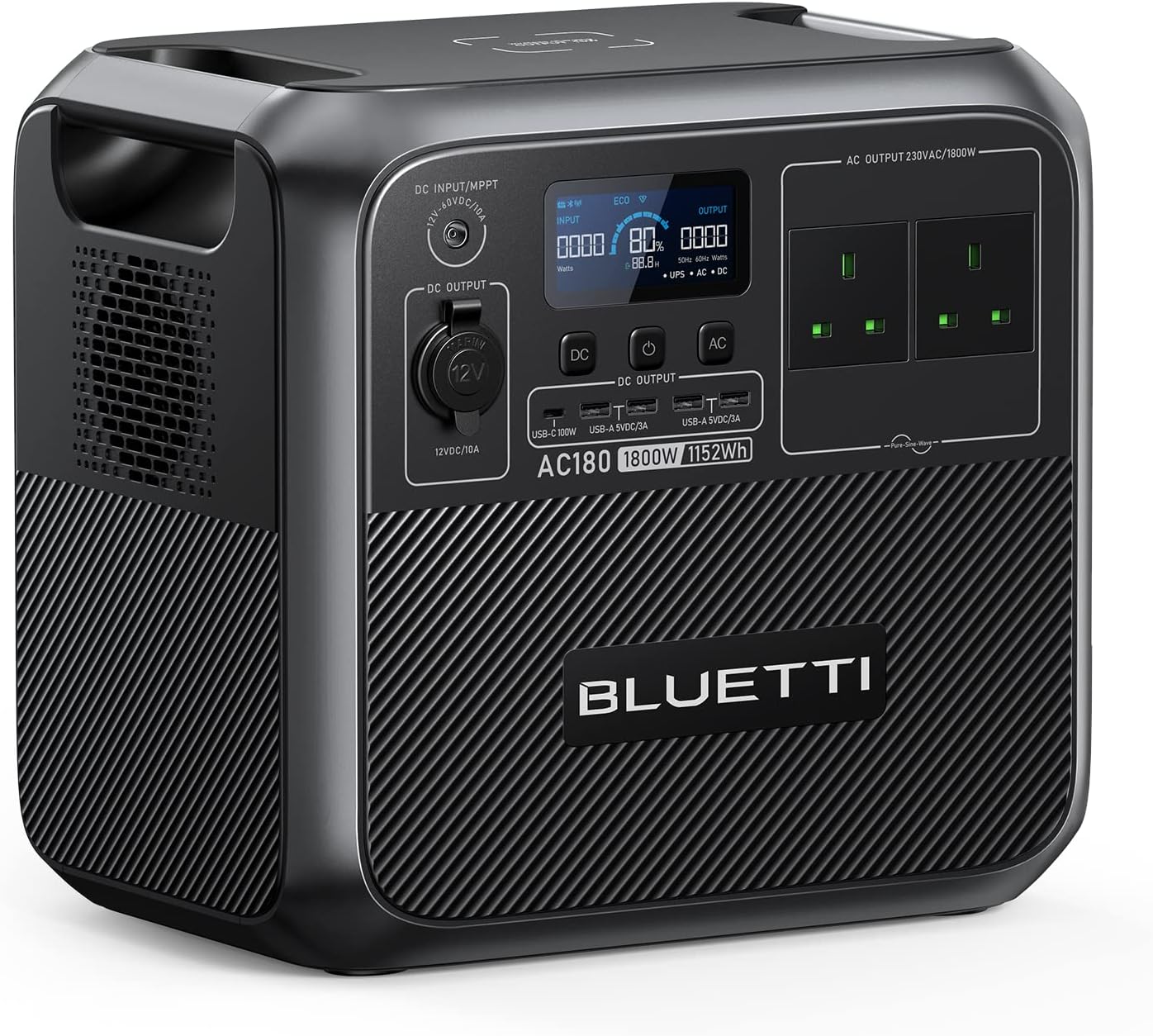Uninterrupted Power: How Power Stations Keep CPAP and Life-Saving Medical Devices Running
Ensure your life-saving medical equipment stays powered during outages, discover the cruciality behind Power Stations Keep CPAP and Life-Saving Medical Devices Running.
For millions globally, medical devices like CPAP machines, oxygen concentrators, and insulin fridges are not just tools—they’re lifelines that ensure health and stability. A power outage, even for a few seconds, can disrupt these critical devices, turning a routine day into a medical emergency. Portable power stations with Uninterruptible Power Supply (UPS) mode provide a reliable, silent, and fume-free solution. These devices ensure continuous operation of essential equipment, offering peace of mind whether at home or during travel. By bridging the gap between grid power and battery backup, they protect patients from the risks of power interruptions, making them indispensable for those dependent on medical technology.
Why Power Loss Is Dangerous for Medical Devices
A sudden power outage can have severe consequences for those relying on medical devices. For CPAP users, a brief interruption can halt breathing support, leading to sleep apnea episodes, fatigue, or even long-term health risks like heart issues. Oxygen concentrators, vital for respiratory patients, stop delivering oxygen, potentially causing life-threatening drops in blood oxygen levels. Insulin fridges risk spoilage of temperature-sensitive medications, while home dialysis machines and feeding pumps, if stopped, can disrupt critical treatments. Even a momentary power loss can trigger device alarms or resets, causing stress and potential harm. Power stations with UPS mode ensure seamless power delivery, preventing these risks and maintaining patient safety during unexpected outages.
What Is a Power Station?
A portable power station is a compact, rechargeable, battery-powered device designed to supply electricity to various devices. Equipped with multiple outputs like AC, DC, and USB ports, they can power everything from CPAP machines to small refrigerators. Unlike noisy, fume-emitting gas generators, power stations operate silently, making them ideal for indoor use, especially in bedrooms where CPAP machines are used overnight. They’re also fume-free, eliminating the risk of carbon monoxide poisoning, and portable, allowing easy movement between home, travel, or off-grid settings. Rechargeable via wall outlets, solar panels, or car chargers, these devices offer flexible, sustainable power solutions for medical needs.
Understanding UPS Mode
Uninterruptible Power Supply (UPS) mode is a critical feature for medical devices, acting as a seamless buffer between the power grid and your equipment. When plugged into a wall outlet, a UPS-enabled power station passes grid power directly to your device while simultaneously charging its internal battery. If the grid fails, it switches to battery power in milliseconds—typically ≤20ms, with top models like the EcoFlow RIVER 3 Plus achieving ≤10ms. This fast switching time prevents device interruptions, alarms, or resets, which is vital for sensitive equipment like CPAP machines or oxygen concentrators. UPS mode ensures continuous operation, providing reliability and safety during power outages.
Benefits of Power Stations for Medical Devices
- Seamless Power: UPS mode ensures uninterrupted operation during outages.
- Silent Operation: No noise, perfect for overnight use with CPAP machines.
- Safe Indoors: Fume-free, eliminating carbon monoxide risks.
- Portability: Compact for home or travel use.
- Versatility: Powers multiple devices, from CPAPs to fridges, with various outputs.
Medical Devices Requiring Backup Power
| Medical Device | Risk if Power Fails | Needs Fast Switching (UPS)? | Typical Power Use |
|---|---|---|---|
| CPAP machine | Stops breathing during sleep | Yes (≤10ms recommended) | 30–70W |
| Oxygen concentrator | Low blood O₂ → life threat | Yes | 100–400W |
| Insulin fridge | Spoiled meds | Yes (for long outages) | 10–100W |
| Home dialysis machine | Health risk if interrupted | Yes | 300–700W |
| Feeding pump | Interrupted nutrition | Yes | 20–60W |
| Suction device | Mucus airway blockage | Yes | 60–120W |
| Nebulizer | Delayed treatment | Useful (not critical) | 60–100W |
How to Set Up a Power Station for UPS
Setting up a power station for UPS functionality is straightforward and user-friendly. First, plug the power station into a wall outlet using its its AC charging cable. Next, connect your medical device to an AC port on the power station. Enable UPS mode, which is often automatic when both the station and device are connected, or may require a simple toggle via the station’s display or app. To ensure proper setup, test the system by unplugging the power station from the wall—your device should continue running without interruption. Many models, like those recommended, feature intuitive LCD screens displaying battery status, output, and estimated runtime, allowing you to monitor performance and ensure continuous power for critical equipment.
Recommended Power Stations Keep CPAP and Life-Saving Medical Devices Running
These power stations offer reliable UPS mode and fast switching for CPAP and medical devices, ensuring uninterrupted power.
EcoFlow RIVER 3 Plus

A compact power station with ultra-fast UPS switching, ideal for CPAP machines and sensitive medical devices.
Key Features:
- UPS Mode: Professional-grade with <10ms switching time.
- Capacity: 286Wh, expandable to 858Wh.
- Output: 600W (1200W with X-Boost).
- Battery: LiFePO4, 3000 cycles to 80% capacity.
- Portability: Lightweight at 4.2 kg.
Benefits:
- Ultra-fast switching ensures seamless power for sensitive devices.
- Compact and portable for bedside or travel use.
- Expandable capacity for longer outages.
- Silent operation (<30 dB at low load).
Jackery Explorer 2000 Plus

A high-capacity power station for extended outages, perfect for multiple or high-power medical devices.
Key Features:
- UPS Mode: Emergency Power Supply with ≤20ms switching.
- Capacity: 2042.8Wh, expandable to 12kWh.
- Output: 3000W (6000W surge).
- Battery: LiFePO4, 4000 cycles to 70% capacity.
- Portability: Heavier at 27.9 kg, suited for home use.
Benefits:
- High capacity for long outages or multiple devices.
- Fast switching suitable for CPAP and sensitive equipment.
- Quiet charging mode (≤30 dB).
- Robust for home or semi-permanent setups.
Bluetti AC180

A versatile power station balancing capacity and portability, reliable for CPAP and general medical backup.
Key Features:
- UPS Mode: Standard with ≤20ms switching.
- Capacity: 1152Wh (1440Wh for AC180P).
- Output: 1800W (2700W with Power Lifting).
- Battery: LiFePO4, 3500+ cycles to 80% capacity.
- Portability: 16 kg, manageable for home use.
Benefits:
- Reliable switching for CPAP and medical devices.
- Balanced capacity for extended use.
- Quiet operation (≈45 dB, adjustable).
- Pure sine wave output for safe powering.
Disclaimer: Always verify product specifications and reviews on Amazon before purchasing, as compatibility and performance may vary by device.
Frequently Asked Questions
Can any power station act as a UPS?
No, only models with dedicated UPS mode and fast switching capabilities are safe for medical gear. Check specifications before purchasing.
Will my CPAP battery last all night?
Yes, a 500–1000Wh power station typically powers a CPAP for 8–16 hours, depending on usage (e.g., humidifier settings).
Can I use solar to recharge the power station?
Yes, most power stations support solar input. A 100–200W panel recharges a medium-sized station in 6–10 hours of sunlight.
Will it damage my medical device?
No, power stations with pure sine wave output, like those listed, provide clean power safe for sensitive electronics.
Can I travel with it?
Yes, but units under 100Wh are best for air travel. Larger units require ground transport. Check airline rules.
Conclusion
A power station with UPS mode is a vital investment for anyone relying on medical devices like CPAP machines, oxygen concentrators, or home dialysis systems. Models like the EcoFlow RIVER 3 Plus, Jackery Explorer 2000 Plus, and Bluetti AC180 deliver reliable, silent, and safe backup power, ensuring uninterrupted operation during outages. Whether at home or on the go, these devices provide peace of mind, protecting health and stability. By choosing a power station tailored to your device’s needs, you can rest assured that your critical equipment will remain operational, even in the face of unexpected power disruptions.
Need the Perfect Power Station?
Explore our range of reliable power stations, from compact models for daily use to high-capacity units for camping or emergencies, ensuring your devices and vehicles stay powered.
Find More Power Station Solutions Here